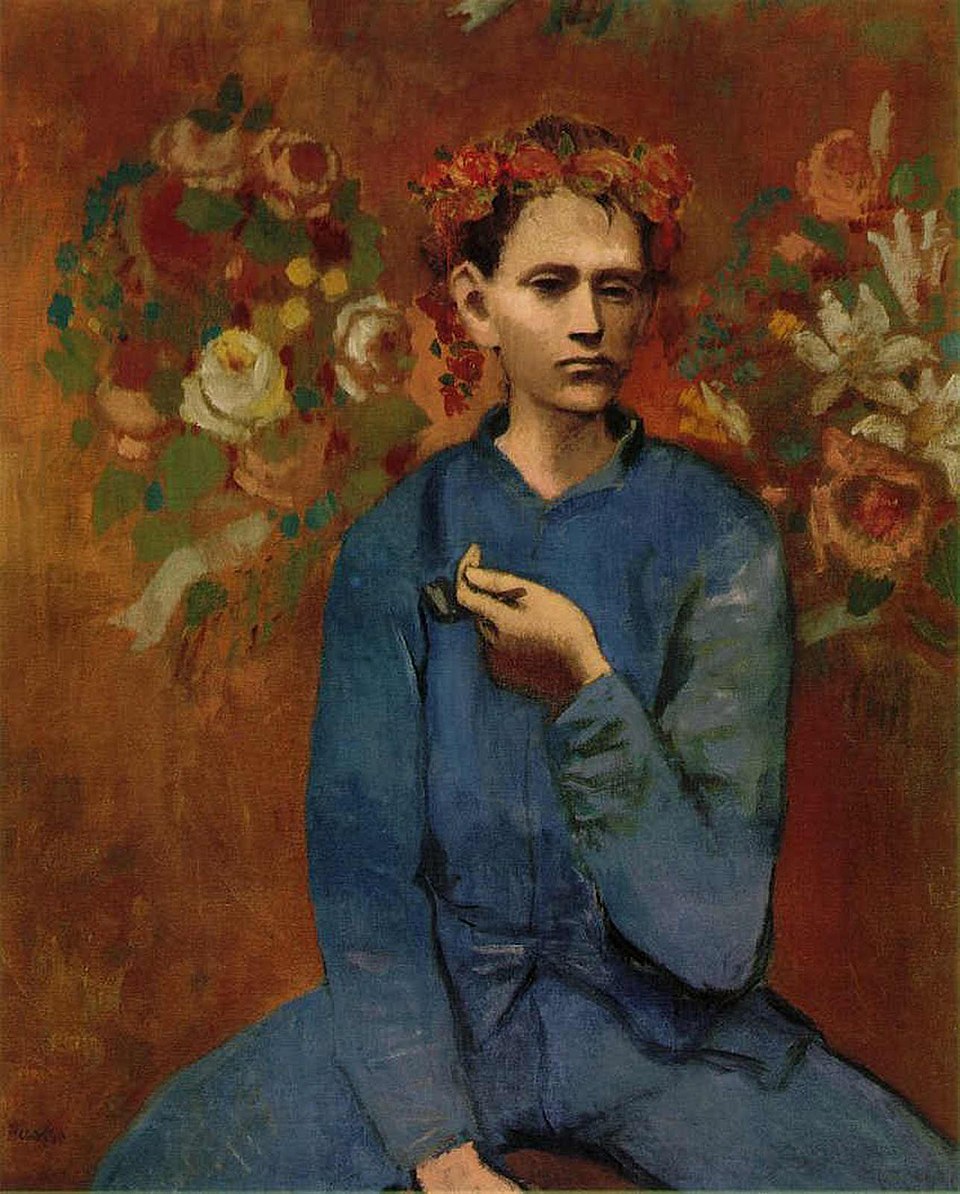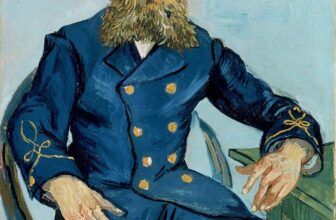
Meaning of Garcon a la Pipe Painting by Picasso
Few paintings in modern art have sparked as much fascination and debate as Garcon a la Pipe (Boy with a Pipe) by Pablo Picasso. Painted in 1905, during the artist’s pivotal Rose Period, this masterpiece captures both a tender moment in the life of a Parisian adolescent and a complex tapestry of symbolism, transition, and introspection.
When it sold for $104.2 million at Sotheby’s in 2004, it became the most expensive painting ever sold at auction at that time. But beyond its monetary value, Garcon a la Pipe holds profound artistic significance. It represents a rare harmony between beauty and melancholy, tradition and innovation, adolescence and maturity, hallmarks of Picasso’s lifelong exploration of the human condition.
In this comprehensive exploration, we will unravel the meaning, symbolism, artistic style, and historical context behind Garcon a la Pipe, understand who the boy might have been, and discuss what exactly is happening in the painting. We’ll also examine how Picasso created this iconic work and where it is today.
What is Garcon a la Pipe All About?
At first glance, Garcon a la Pipe seems deceptively simple: a young Parisian boy sits pensively against a decorative floral background, holding a clay pipe. A garland of pink and red roses, with faint hints of white, rests atop his dark hair like a crown. He wears blue clothing, loose-fitting and casual, while the pipe loosely hangs in his hand.
Yet, beneath this calm surface lies a richly layered work. Garcon a la Pipe is not just a portrait; it is an evocative meditation on youth, identity, beauty, and the tension between innocence and experience. It’s as much about transition as it is about presence. The boy is frozen in time, caught between childhood and adulthood, perhaps not entirely belonging to either.
Who is the Boy in the Painting?
The identity of the boy has been the subject of speculation for decades. According to historical records and anecdotes from Picasso’s life in Montmartre, the boy was a local Parisian teenager named “P’tit Louis” who lived in the artist’s neighborhood in the bohemian quarter of Montmartre.
Picasso, then in his early twenties, had recently moved into the Bateau-Lavoir building, a rickety tenement home to a community of impoverished poets, writers, and painters. It was here that Picasso encountered P’tit Louis. Accounts suggest that the boy worked in the neighborhood, perhaps delivering bread or performing odd jobs.
Intrigued by the youth’s demeanor, Picasso asked him to sit for a portrait. Though the boy posed for Picasso over several sessions, he reportedly grew restless, showing little interest in the painting. Picasso himself later admitted that he painted the floral background and added the rose garland only after the boy stopped sitting for him.
This spontaneous alteration may account for the surreal quality of the finished painting, it blends portraiture with poetic fantasy.
How Garcon a la Pipe Was Painted: A Glimpse into Picasso’s Process
Garcon a la Pipe was painted in 1905, a defining year in Picasso’s artistic development. He was just 24 years old and emerging from a period of intense sorrow known as his Blue Period, a phase dominated by cool tones, melancholic themes, and emotional depth, prompted by the suicide of his close friend Carlos Casagemas.
The Rose Period, which followed, signaled a return to warmth, softness, and human connection. Gone were the cold, somber hues of the Blue Period; in their place bloomed shades of rose, ochre, warm terracotta, and pastel.
This transitional moment is palpable in Garcon a la Pipe. The palette is a delicate blend, mostly warm, but still tinged with subtle melancholy. Picasso used oil on canvas, working carefully with light and shadow to create a sense of volume and presence in the boy’s form. The background, filled with floral motifs, was likely inspired by decorative murals or perhaps even local carnival aesthetics.
Interestingly, the pipe and the rose garland were late additions, possibly symbolic insertions meant to give the boy a mythic or theatrical air. This shows Picasso’s inclination not only to portray but to elevate and transform his subjects.
What is Happening in the Painting?
The narrative of Garcon a la Pipe is open to interpretation. There’s no dramatic action, no defined plot, just a moment captured in time.
The boy sits silently, his gaze seemingly directed inward rather than at the viewer. The pipe suggests adulthood, perhaps even world-weariness, while his youthful face contradicts such associations. The floral garland, colorful and ornate, adds an almost Dionysian or classical flair to his appearance.
This is a portrait that tells us less about what is happening and more about what is becoming. The boy is in a state of becoming, no longer a child, not yet a man. The stillness is deceptive; beneath it lies the quiet turbulence of transformation.
There is also an inherent tension in the painting: the contrast between the ornamental beauty of the setting and the stoic calm of the boy’s face. This contrast is where the painting gains its emotional power.
Symbolism and Meaning of Garcon a la Pipe Painting
Let’s examine some of the core symbolic elements in the painting:
1. The Pipe
In art history, the pipe often symbolizes maturity, masculinity, and contemplation. Yet in Garcon a la Pipe, the pipe seems almost too large, too sophisticated for the boy. It feels more like a costume piece, a symbol he’s trying on, rather than embodying. This suggests experimentation with identity, a core theme of adolescence.
2. The Rose Garland
The rose garland is one of the most striking features of the work. It may symbolize youth, beauty, or a kind of performative innocence. But roses can also signify love, mortality, and transience, echoing the boy’s impermanence in this liminal state of being.
Some critics argue that the garland, with its classical and theatrical allusions, transforms the boy into a modern-day Bacchus or satyr-like figure, suggesting pleasure, abandon, or artistic reverie. Others see it as Picasso’s attempt to merge realism with fantasy.
3. The Background Flowers
The floral motifs behind the boy, painted with decorative flourishes, serve to elevate the portrait into a dream-like composition. They may signify vitality and growth, but also represent the world of artifice and imagination, perhaps contrasting the simplicity of the boy with the complexity of his surroundings.
4. The Blue Clothing
Though painted during the Rose Period, the boy’s attire remains blue, a visual link to Picasso’s previous phase. This may subtly allude to Picasso’s own transition, as he emerged from the shadows of sorrow into the light of renewal.
5. The Boy Himself
The boy, calm and poised, becomes a symbol of introspection and transition. He represents not just himself, but the broader theme of transformation, from youth to adulthood, from simplicity to complexity.
What Type of Art is Garcon a la Pipe?
Garcon a la Pipe belongs to the genre of portraiture, but it defies easy categorization. It straddles several movements and styles, making it uniquely hybrid.
1. Rose Period Work
Primarily, it is a Rose Period painting, Picasso’s brief but significant exploration of warmth, elegance, and humanism. In this phase, Picasso was influenced by the circus performers, harlequins, and acrobats he met in Montmartre. Many of his Rose Period works feature them as poetic figures, much like the boy here.
2. Post-Impressionism
The use of bold outlines, flat areas of color, and symbolic overtones aligns the work with Post-Impressionist sensibilities. Though less abstract than later Cubist works, it displays Picasso’s growing interest in mood over realism.
3. Symbolism
There is a subtle Symbolist undercurrent. Like many Symbolist painters of the late 19th century, Picasso imbues objects, like the pipe and garland, with emotional and metaphoric weight.
Thus, Garcon a la Pipe can be best described as a transitional piece: part portrait, part Symbolist reverie, entirely Picasso.
Where is Garcon a la Pipe Today?
Following its record-breaking sale in 2004 at Sotheby’s in New York, Garcon a la Pipe entered a private collection. The buyer remains anonymous, and the painting is not on public display. It is believed to reside in a secure private vault, most likely in the United States or Europe.
While this limits the ability of the general public to view the painting in person, it continues to hold a celebrated place in academic and artistic circles worldwide. High-resolution reproductions and scholarly studies keep its legacy alive.
Why Does Garcon a la Pipe Matter So Much?
Garcon a la Pipe captures Picasso at a crossroads, not only between his Blue and Rose Periods, but between the representational art of his youth and the radical innovation of Cubism that would soon follow.
It is a snapshot of artistic evolution, frozen in oil and canvas. The painting resonates emotionally and intellectually. Its quiet dignity, subtle symbolism, and painterly beauty offer insight not just into Picasso’s growth, but into universal themes of adolescence, identity, and transformation.
For modern viewers, it serves as a mirror, inviting introspection about the transitions in our own lives. That, perhaps, is the greatest achievement of Garcon a la Pipe: its ability to speak intimately and eternally.
Garcon a la Pipe is more than just one of Picasso’s most famous paintings, it is a profound artistic statement about youth, imagination, and the journey of self-discovery. In its quiet grace, it reminds us that art need not shout to be revolutionary. Sometimes, the most powerful works are those that whisper.
Through subtle symbolism, emotional depth, and painterly elegance, Picasso transformed an ordinary Parisian boy into a timeless figure of myth and memory. Though painted over a century ago, Garcon a la Pipe continues to captivate, inspire, and mystify, proving that great art, like youth itself, never truly fades.




